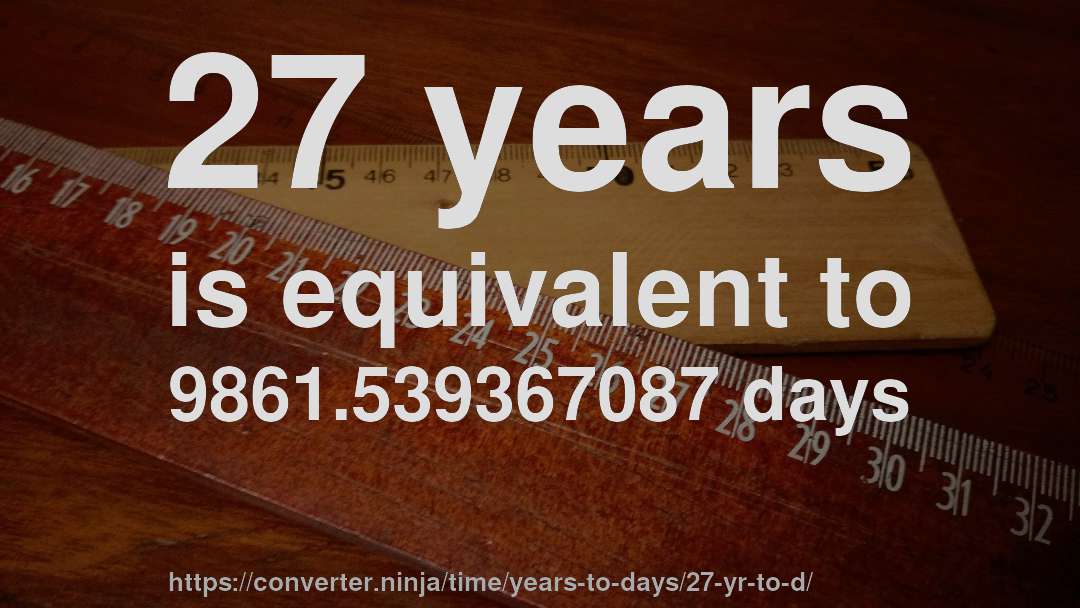27 yr to d - How long is 27 years in days? [CONVERT] ✔

27 years is equivalent to 9861.539367087 days.
We know (by definition) that: 1 yr ≈ 365.2422 d
We can set up a proportion to solve for the number of days.
1 yr 27 yr ≈ 365.2422 d x dNow, we cross multiply to solve for our unknown x:
x d ≈ 27 yr 1 yr * 365.2422 d → x d ≈ 9861.539400000001 dConclusion: 27 yr ≈ 9861.539400000001 d
The inverse of the conversion factor is that 1 day is equal to 0.000101404046850689 times 27 years.
It can also be expressed as: 27 years is equal to 1 0.000101404046850689 days.
Approximation
An approximate numerical result would be: twenty-seven years is about nine thousand, eight hundred and sixty-one point five four days, or alternatively, a day is about zero times twenty-seven years.
Units involved
This is how the units in this conversion are defined:
Years
"A year is the orbital in which Earth moves in its orbit around the Sun. Due to the Earth's axial tilt, the course of a year sees the passing of the seasons, marked by changes in weather, the hours of daylight, and, consequently, vegetation and soil fertility. In temperate and subpolar regions around the globe, four seasons are generally recognized: spring, summer, autumn and winter. In tropical and subtropical regions several geographical sectors do not present defined seasons; but in the seasonal tropics, the annual wet and dry seasons are recognized and tracked."
Days
"A day is a unit of time. In common usage, it is either an interval equal to 24 hours or daytime, the consecutive period of time during which the Sun is above the horizon. The period of time during which the Earth completes one rotation with respect to the Sun is called a solar day. Several definitions of this universal human concept are used according to context, need and convenience. In 1960, the second was redefined in terms of the orbital motion of the Earth, and was designated the SI base unit of time. The unit of measurement day, redefined in 1960 as 86 400 SI seconds and symbolized d, is not an SI unit, but is accepted for use with SI. A civil day is usually 86 400 seconds, plus or minus a possible leap second in Coordinated Universal Time (UTC), and occasionally plus or minus an hour in those locations that change from or to daylight saving time."
[1] The precision is 15 significant digits (fourteen digits to the right of the decimal point).
Results may contain small errors due to the use of floating point arithmetic.ncG1vNJzZmibn6PDpr7Tnqlnppmjt6J706Kknmepmq6zv4ytpmacka7AcH6WZrCrZaSkeqV7